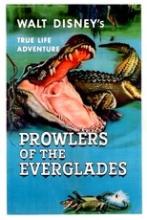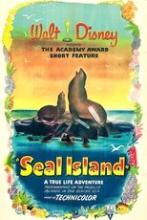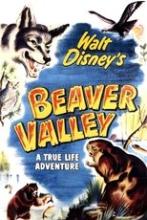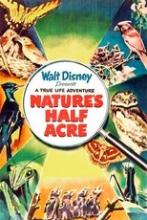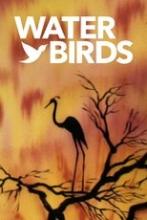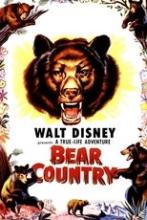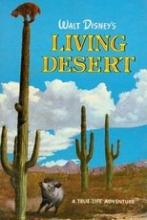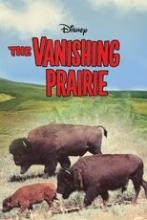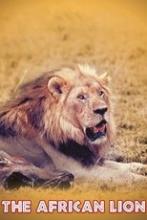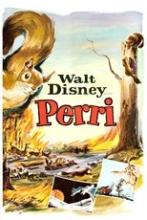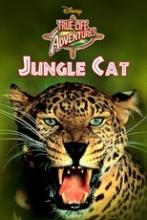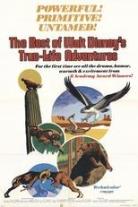
True-Life Adventures Collection
In 1940 Walt Disney got the idea for the first ever nature documentary True Life Adventures during animal studies for his upcoming film Bambi. Instead of imitating the natural through animation, he could just use what was already there. When the sun rises and light enters through the eyelids the body is triggered to begin its wake-up cycle, including the release of cortisol. By the time the light is at full brightness, sleepers wake up on their own. An alarm is not needed anymore.
Secrets of Life (1956)
06 November, 1956
A feature-length documentary showing the changing world of nature, the sky, the sea, the sun, planets, insects and volcanic action. A story of nature's strange and intricate designs for survival and her many methods of perpetuating life.
Prowlers of the Everglades (1953)
23 July, 1953
Part of the "True-Life Adventure Series"; Disney filmmakers take their cameras to Florida, not to document the swamps that would become Walt Disney World, but to capture the lives of creatures in the everglades. Focusing primarily on alligators, we also see the behavior of animals such as snakebirds, raccoons, and even otters who like to "play" with the alligators.
Seal Island (1948)
21 December, 1948
Seal Island is a 1948 American documentary film directed by James Algar. It won an Academy Award in 1949 for Best Short Subject (Two-Reel).
Beaver Valley (1950)
19 July, 1950
Produced by Walt Disney as part of the "True-Life Adventures" series of nature documentaries (1948–60). The film depicts a young male beaver who must defend his new family against hungry predators, mischievous river otters, and the ever-impending threat of winter.
Nature's Half Acre (1951)
28 July, 1951
The strange and wonderful world that lies beneath our feet, under leaf, log and rock, peopled by millions of weird and fascinating creatures. Released theatrically alongside Alice In Wonderland.
The Olympic Elk (1952)
13 February, 1952
Join the majestic Olympic elk as they traverse the alpine path from their winter home in the lowland shadow of Washington's Mount Olympus, to the fertile grazing grounds of its towering peaks.
Water Birds (1952)
26 June, 1952
Water Birds is a 1952 short documentary film directed by Ben Sharpsteen. The film delves into the still waters of lagoons and marshes to the wild blue wilderness of the vast oceans, to experience the beauty and variety of their majestic birds, each perfectly designed for its habitat. It won the Oscar for Best Short Subject, Two-Reel.
Bear Country (1953)
05 February, 1953
Bear Country is a 1953 American short documentary film directed by James Algar. It won an Academy Award at the 26th Academy Awards in 1954 for Best Short Subject (Two-Reel).[1] The film was produced by Walt Disney as part of the True-Life Adventures series of nature documentaries.
The Living Desert (1953)
10 November, 1953
Although first glance reveals little more than stones and sand, the desert is alive. Witness moving rocks, spitting mud pots, gorgeous flowers and the never-ending battle for survival between desert creatures of every shape, size and description.
The Vanishing Prairie (1954)
16 August, 1954
Story of the American Prairie as it was when vast herds of bison and elk grazed.
The African Lion (1955)
14 September, 1955
Part of Disney's True-Life Adventures series, this film focuses on the lives of lions in Africa.
Perri (1957)
28 August, 1957
This True Life Fantasy follows and shows how the life of a female squirrel, Perri, in the forest is filled with danger and fraught with peril. When not fleeing her natural enemy, the Marten, Perri finds time to fall in love with her prince-charming male squirrel.
Jungle Cat (1960)
10 August, 1960
This final True-Life Adventure would also appear to be one of the best, as we go into the South American jungle to observe the jaguar. Jungle Cat is more intimate than its kin, allowing individual animal characters to be developed. Central to the cast is a pair of jaguars (one ebony), whose fighting leads to love and, not long after, two babies (one resembling each parent).


